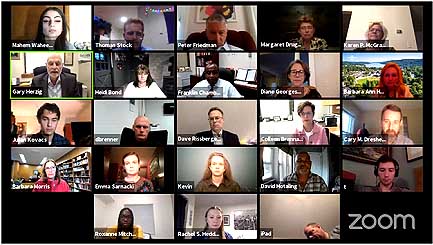MarzNC
Well-known member
- Joined
- Jul 18, 2020
It's been very difficult to know what distance, indoors or outdoors, is relatively low risk when somewhere there are strangers. Even when reading a lot of articles in the past few months. Six feet is obviously better than 2-3 feet, but is it enough? Some research indicates aerosols can travel up to 20 feet when someone is coughing or sneezes. It's worth remembering that time of exposure is also a significant factor. Close contact is considered within 3 feet for more than 15 minutes.
Here's a recent research report done in the UK that suggests a framework to help people decide on the level of risk associated with being with strangers that considers location (indoor/outdoor), ventilation, duration, and whether or not face masks are in use. The summary table doesn't try to define Low or High for Occupancy or Short versus Long for Time. But still can be useful for deciding what situations and locations worth avoiding. Fair to say that the "shouting, singing" category is one way to address a bar . . . or a choir practice.
As always, the decision of what's "high risk" and worth avoiding is a personal decision that depends on many factors.
August 25, The BMJ (UK medical journal)

 www.bmj.com
www.bmj.com

Here's a recent research report done in the UK that suggests a framework to help people decide on the level of risk associated with being with strangers that considers location (indoor/outdoor), ventilation, duration, and whether or not face masks are in use. The summary table doesn't try to define Low or High for Occupancy or Short versus Long for Time. But still can be useful for deciding what situations and locations worth avoiding. Fair to say that the "shouting, singing" category is one way to address a bar . . . or a choir practice.
As always, the decision of what's "high risk" and worth avoiding is a personal decision that depends on many factors.
August 25, The BMJ (UK medical journal)

Two metres or one: what is the evidence for physical distancing in covid-19?
Rigid safe distancing rules are an oversimplification based on outdated science and experiences of past viruses, argue Nicholas R Jones and colleagues Physical distancing is an important part of measures to control covid-19, but exactly how far away and for how long contact is safe in...
Last edited:






